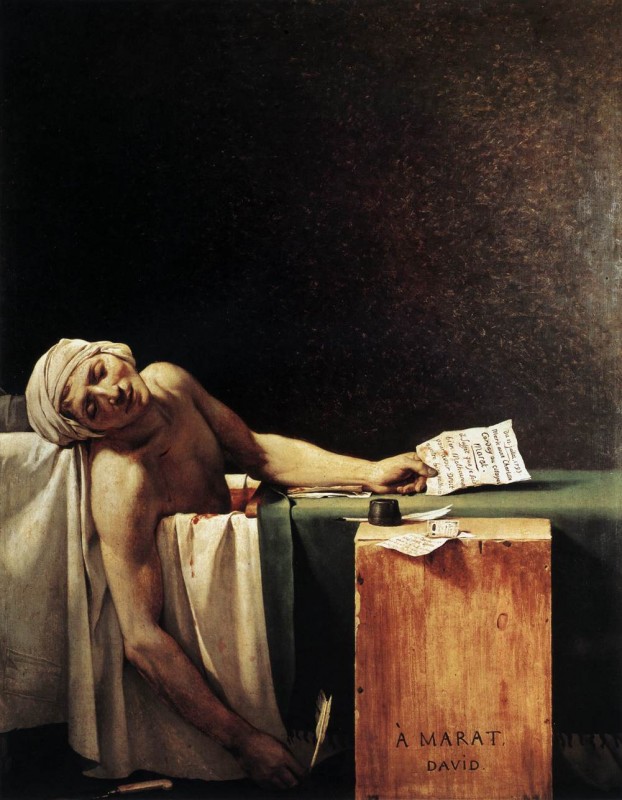The Death Of Marat (1793)
The French Revolution, especially the Reign of Terror, was like a terrible car accident – horrifying and awful yet incredibly intriguing. Jacques Louis David’s painting The Death of Marat captured a symbolic moment of that great wreck as the French, wrought with fear, were executing and killing potential conspirators in rapid succession. Among the casualties was the radical journalist Jean-Paul Marat, the subject of David’s painting, and a close friend of the artist. The Neo-Classicist David employed many techniques, drawing inspiration from genius works before him; the elongated arm is emblematic of Renaissance artists like Michelangelo, while the use of blending light and dark colours recalls Caravaggio’s technique of chiaroscuro during the Baroque period. David, by painting a light glow around Marat’s body, suggests martyrdom, depicting his friend as a hero.
Interestingly enough, Marat’s killer is scribbled on the letter that he is holding.
Such detail, in combination with David’s stunning technique, highlights the brilliance of the painting, and of David as an artist.
The Martyrdom Of Saint Livinius (1636/1637)
Peter Paul Rubens, one of Belgium’s greatest painters, was best known for his portrait work and allegorical scenes often containing nude women. The Martyrdom of Saint Livinus was made for the Jesuit church in Ghent.
His impressive painting depicts the removal of a saint’s tongue amidst great chaos where heaven and earth collide. The use of strong colors – a bold red calls immediate attention to the center of the painting – and great movement on a large canvas, heighten an already dramatic scene. Great passion, as evidenced by his brush strokes, is specially apparent in the sweeping sky and the flowing clothing of the many subjects. Each character, whether it is an angel, animal or human, is captured in a specific point in time. This ‘snapshot’ is something Rubens was a master at. As these characters flow in and out of the scene, it adds not only movement, but also an ability to analyze the painting for hours, thinking what happened before this specific moment and what might happen after. With temperatures dropping and snow piling up, considering this work in the warmth of the museum might be the best way to spend a day.







